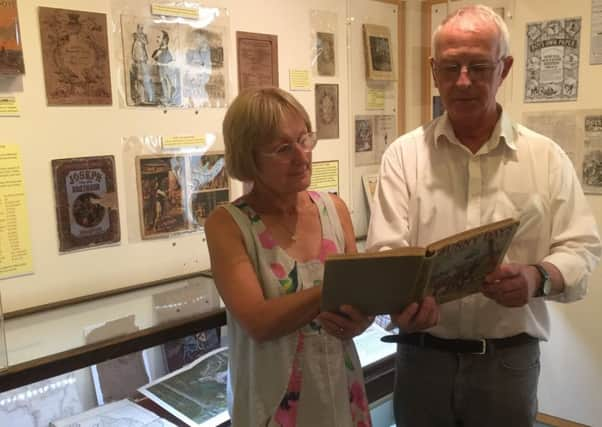Steyning Museum finds archive gems


The two exhibitions entitled ‘Illustrative Delight’ and ‘Market Town’ will be displayed at the museum until Wednesday October 31.
Andrew Woodfield, curator of exhibitions, said: “We are able to create our exhibitions because the museum has such a remarkable archive that has been largely donated by local residents.
Advertisement
Hide AdAdvertisement
Hide Ad“Many of the artefacts in our two current exhibitions are rarely, if ever, seen by the public.
“Like most museums we have more items stored in our archive than we can display in our permanent exhibition space.”
‘Illustrative Delight’ takes us back to a bygone age of children’s books, when, long before television, their imagination was fired by exciting and beautiful illustrations.
This great show will both remind our older visitors of their own childhood reading experiences and intrigue younger generations.
Advertisement
Hide AdAdvertisement
Hide AdThe artists who illustrated these beautiful books may not be remembered now, but their talent is immediately obvious and enchanting.
Scenes of life in the early 20th century are brought vividly to life.
The Excursion Train with its billowing steam reminds us that holidays started at the railway station for most people – the text bringing us right back to the present day: ‘We shall all get in, though I don’t know how. Oh will there be room enough?’
Does this remind you of present day rail travel?
‘Market Town’ examines the history of Steyning’s important role as a regular farming and agricultural market location, which drew in traders from afar.
Advertisement
Hide AdAdvertisement
Hide AdBefore the advent of the railway, cattle were walked to Steyning by drovers’ roads from as far away as Wales.
The High Street would once have been thronging with livestock - the smells and the noise would have added to the market atmosphere!
Steyning gained the status of being a town when it was granted the right to hold a regular market in the medieval period.
One of the earliest written records of Steyning market is 1210, and a time line in the exhibition highlights important dates.
Advertisement
Hide AdAdvertisement
Hide AdPhotographs and items transport us to a very different way of life.
An ox shoe, for example, was specially made to protect the feet of cloven-hoofed animals in their long walk to market.
A cattle bell is displayed for visitors to ring.
Once the railway came to Steyning, animals arrived by train and the market was transferred to a site near the railway station.
For more details visit www.steyningmuseum.org.uk